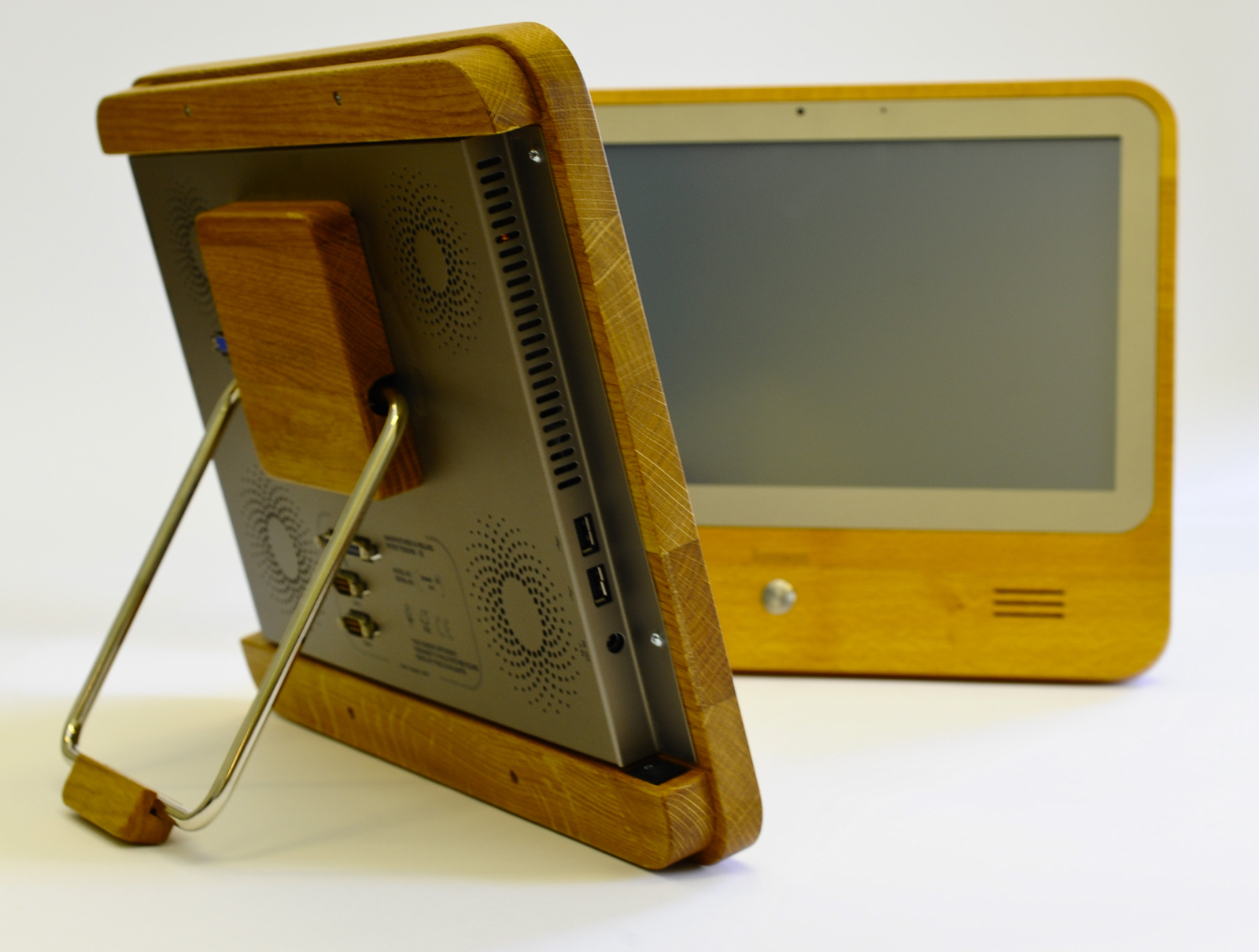Eco-Computer with a natural wood look
Surfing for hours on the Internet consumes a lot of electricity and is harmful to the environment. However, a new ecological PC saves energy as it operates: It produces about 70 percent less CO2 than conventional computers. As the first computer of its class, it obtained the “EU Ecolabel,” the environmental label of the European Union.

A work tool, a leisure activity resource, a personal assistant - computers are ubiquitous. Yet the environmental performance for today‘s computers leaves a lot to be desired: they rapidly become obsolete, typically contain toxic substances as flame retardants and have individual components that are difficult to recycle. Moreover, they consume plenty of power whose production, in turn, causes the release of CO2 into the atmosphere.
Employees at the MicroPro Company in Ireland, working in collaboration with colleagues at the Fraunhofer Institute for Reliability and Microintegration IZM in Berlin, have engineered a wooden-frame computer with reduced environmental impacts. As the first computer of its class, the “iameco” (pronounced “I - am - eco”) was awarded for the “EU Ecolabel,” the European Union’s environmental label. “This touch-screen PC has a very low energy consumption over the entire lifecycle of the unit – starting from production, through the use phase to its ultimate recycling,” explains Alexander Schlösser, scientist at IZM. The carbon footprint is less than 360 kilograms CO2eq over the full product life cycle, which is 70 percent less than a typical desktop PC with monitor. In addition, it can be easily recycled. Of the materials used, 98 percent can be recycled. Indeed, 20 percent of the computer can be recycled immediately – in other words, many parts and components can be reused for repairing other computers – such as parts of the wooden frame.
Heatsinks replace fans
But how is it possible to design such an environmentally-friendly PC? One example: to ensure that the processor does not overheat, a fan typically provides cooling to the PC. This kind of ventilation not only consumes energy, it also comes with an annoyingly incessant buzz. So, the fans were replaced with heatsinks, which convey the heat from the processor via copper tubes, called heat pipes. This fan-free design saves energy, and the computer is barely audible. The scientists also got creative with the display lighting. Instead of conventional lighting, LEDs illuminate the screen and improve its energy efficiency by 30 to 40 percent. The manufacturers reduced the hazardous materials to a minimum, and for the most part substituted halogenated flame retardants with chemicals that are less harmful to the environment. Over the long term, these halogenated flame retardants should disappear from all computers.
Since the eco-PC was designed with standard components, users can retrofit it anytime – for example, if more internal memory is needed. And if the computer were to crash , the users would benefit from the improved dissasembly and modular design of the device. This enables the capability for easier repair and maintenance. Only those components will be replaced that are so severely damaged that they can no longer be repaired. The better maintenance option ensures a longer product life, and the easily conducted repairs ensure a high degree of environmentally sound engineering. In the next stage, the manufacturer intends to expand the modularity of the computer so that after a few years, users can equip older computers with a new internal life. The “old” computer would then return to the latest state of the art – and would cost only half as much as a completely new PC. The employees at MicroPro and IZM want to continue collaborating in the future as well. At this time, they are jointly developing an environmentally-friendly wooden frame notebook.